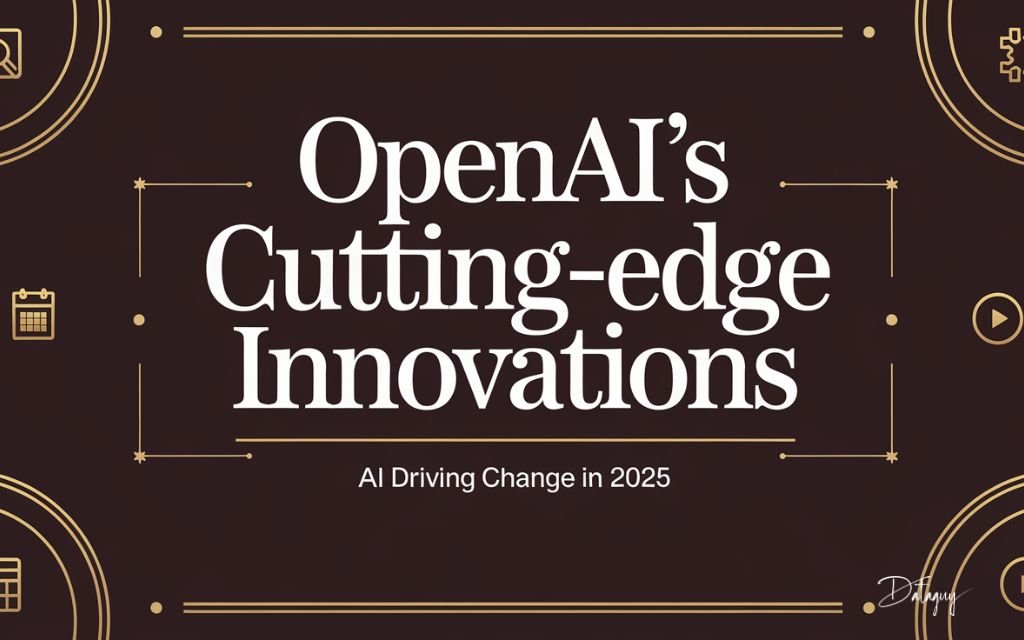Insights Index
ToggleRevolutionary OpenAI Features: ChatGPT & Operator Redefine AI in 2025
New Features of ChatGPT
1. Video Interaction
OpenAI’s ChatGPT can now process and interact with videos. Users can point their smartphone cameras at objects, and the AI provides real-time insights, akin to Google Lens.
Who Can Access It? Currently available for ChatGPT Plus and Pro subscribers, this feature is expected to roll out for enterprise and educational users by January 2025.
2. Sora Turbo: Ultra-Realistic Video Creation
With Sora Turbo, users can generate ultra-realistic videos from text prompts.
Customization Options: Choose video length (up to 20 seconds), resolution (up to 1080p), and formats (widescreen, vertical, or square).
Detailed Editing: A storyboard feature enables precise control over the video creation process.
3. Enhanced Image Input Capabilities
Users can now upload images to ChatGPT for analysis.
Capabilities: The AI can describe scenes, interpret text in unfamiliar languages, and assist with visual tasks like object recognition.
4. DALL-E Integration for Image Generation
ChatGPT now integrates with DALL-E, offering powerful tools for image creation and editing.
Features: Generate images in diverse artistic styles or modify existing ones by changing the subject, background, or style.
5. Tasks and Projects for Workflow Management
OpenAI introduced features aimed at improving productivity:
- Tasks: Users can set reminders and schedule actions, positioning ChatGPT as a digital assistant.
- Projects: Create separate workspaces for enhanced task organization and collaboration.
6. Memory Functionality
The new memory feature allows ChatGPT to retain information across sessions for Plus users.
Personalization: Manage what the AI remembers and forgets to tailor interactions to your preferences.
7. Accessibility Enhancements
OpenAI has made ChatGPT more accessible by:
- Guest Access: Using the tool without an account.
- Security: Introducing multi-factor authentication for safer usage.
OpenAI Canvas: A New Way to Collaborate
OpenAI Canvas is a newly introduced feature in ChatGPT designed to enhance the writing and coding experience. It provides a dedicated workspace that allows users to interact with the AI in real time, making it easier to edit and collaborate on projects.
Key Features of OpenAI Canvas
1. Real-Time Collaboration
Users can edit text and code while receiving inline suggestions from ChatGPT. This helps streamline the workflow
for both writing and programming tasks.
2. Interactive Workspace
Canvas opens in a separate window, allowing users to manage their projects more effectively.
Users can highlight specific sections for focused feedback from the AI.
3. Editing Tools
The feature includes options for adjusting writing length, debugging code, translating between programming languages,
and adding comments to improve code readability.
OpenAI’s Operator: A Revolutionary AI Agent
What is Operator?
Operator is an advanced AI agent designed to automate web-based tasks. By leveraging natural language prompts, users can delegate complex tasks to Operator, saving time and effort.
Key Features of Operator
1. Autonomous Task Execution
Operator performs tasks like booking tickets, filling forms, or ordering groceries independently.
2. Web Interaction via Computer-Using Agent (CUA)
Powered by the Computer-Using Agent model, Operator mimics human actions like typing, scrolling, and clicking.
- Flexibility: Adapts to various applications without requiring custom API integrations.
- Advanced Reasoning: Combines visual understanding with reinforcement learning to handle real-time scenarios.
3. Multi-Step Task Handling
Operator can break down complex tasks into manageable steps and execute them sequentially.
4. Self-Correction Mechanism
When encountering errors, Operator uses its reasoning abilities to self-correct. For unresolved issues, it pauses and requests user input.
5. Custom Instructions
Users can set specific preferences for websites, such as airline seat selections or delivery options.
6. Integration with Popular Services
OpenAI has partnered with platforms like Instacart and OpenTable to streamline task automation.
Availability of Operator
Operator is currently in a research preview phase, accessible to ChatGPT Pro subscribers in the United States. OpenAI plans to expand availability as the tool matures.
Differences Between Operator and Traditional AI Agents
1. Autonomy Level
Unlike traditional AI agents requiring continuous user input, Operator executes complex tasks autonomously.
2. Task Complexity
Operator excels in handling intricate, multi-step operations, while most AI agents manage simpler, predefined tasks.
3. Proactive Interaction
Operator adapts to real-time challenges dynamically, offering a human-like interaction experience.
4. Learning and Adaptation
Using advanced machine learning, Operator improves its decision-making based on past interactions.
5. Seamless Tool Integration
Operator works across multiple applications without requiring explicit user instructions for each step.
Conclusion
OpenAI’s latest innovations—from ChatGPT’s video interaction and DALL-E integration to Operator’s autonomous task execution—mark a new era in AI technology.
These features cater to both casual users and professionals, enhancing productivity and personalization. As OpenAI continues to refine these tools, the future of AI promises even greater advancements in how we interact with technology.
Stay ahead with OpenAI’s cutting-edge features and transform the way you work and live!

